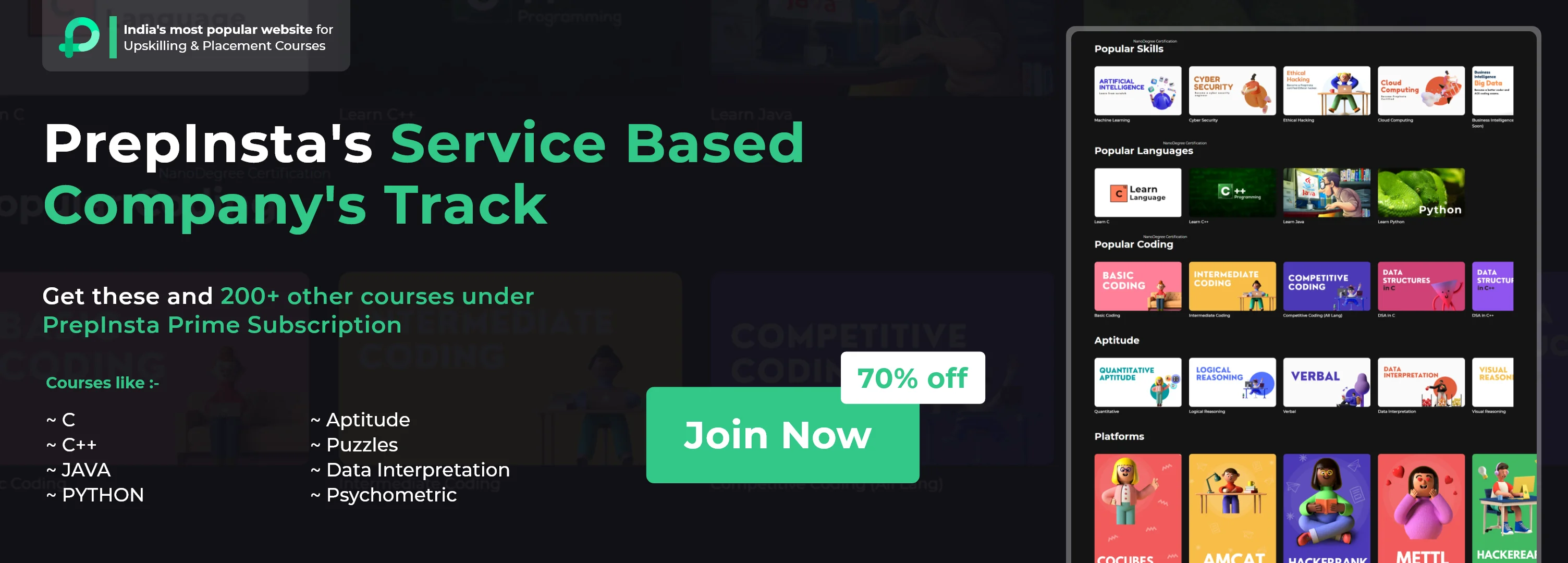0
Notifications Mark All Read
- Login
- Get Prime
Logical Menu
- Number Series
- Coding and Number Series
- Letter and Symbol Series
- Logical Sequence of Words
- Analogy and Classification Pattern
- Statements and Conclusions
- Statements and Assumptions
- Data Sufficiency
- Visual Reasoning
- Cube and Cuboid
- Cube
- Dice
- Directional Senses
- Blood Relations
- Odd Man Out
- Syllogism
- Arrangements
- Seating Arrangements
- Coding Deductive Logic
- Objective Reasoning
- Selection Decision Tables
- Attention to Details
- Inferred Meaning
- Cryprtarithmetic
- Get Off-campus Drive Updates
- Get Hiring Updates
- Contact US
How to Solve Objective Reasoning Quickly
How to Solve Objective Reasoning
In this Page How to Solve Objective Reasoning Quickly is given.
Objective Reasoning is an important part of competitive examinations, and achieving good marks in this section can lead to a good score and rank.

How to Solve Objective Reasoning:
Solving objective reasoning questions requires a systematic approach and critical thinking skills. Here are some steps you can follow:
- Read the question carefully: Begin by understanding the question and identifying the key information provided. Pay attention to any specific instructions, premises, or evidence presented in the question.
- Identify the type of objective reasoning question: Objective reasoning questions can come in various forms, such as identifying assumptions, drawing conclusions, evaluating arguments, or finding logical relationships. Determine the specific type of question you are dealing with to guide your approach.
- Analyze the given information: Carefully examine the statements, premises, evidence, or arguments presented in the question. Identify any logical connections, patterns, or relationships between the information provided.
- Evaluate the validity of the statements: Assess the logical validity of the given statements or premises. Determine if the information is factually accurate, consistent, and coherent. Look for any logical fallacies or inconsistencies that might weaken the arguments.
- Identify assumptions or missing information: Consider what underlying assumptions might be necessary for the given information to lead to the conclusion. Identify any missing pieces of information that would strengthen or weaken the arguments.
- Use logical reasoning and deduction: Employ logical reasoning and deductive thinking to evaluate the arguments and draw conclusions. Consider the logical connections between the premises and the conclusion, and assess if the conclusion logically follows from the given information.
- Consider counterarguments or alternative explanations: Think critically and consider alternative viewpoints, counterarguments, or explanations that might weaken or challenge the given arguments. Look for potential flaws, gaps in reasoning, or additional evidence that might alter the conclusion.
- Select the most reasonable answer: Based on your analysis and critical thinking, select the answer choice that best aligns with your evaluation of the question. Eliminate any answer choices that are illogical, unsupported, or do not align with the given information.
- Check your answers: Before finalizing your answer, review your reasoning and make sure it is consistent and logical. Verify that your chosen answer is supported by the given information and your critical analysis.
Prime Course Trailer
Related Banners
Get PrepInsta Prime & get Access to all 200+ courses offered by PrepInsta in One Subscription
Also Check Out:
Examples on How to Solve Objective Reasoning Questions quickly :
Type 1: Statements & Conclusions
Question 1.
Statement:
We will win the match if all the players play with their full potential. We finally won the match.
Conclusion:
I. All the players played with their full potential.
II. Because of only some players we won the match.
A.Only conclusion I follows
B.Only conclusion II follows
C.Either I or II follows
D.Neither I nor II follows
E.Both I and II follows
Correct answer A
Explanation:
It is clearly mentioned in the statement that if all the players will give their best than only we can win the match. Therefore, only conclusion I follows and conclusion II does not.
Question 2.
Statement:
“Due to change in the international oil prices, the government will review the present diesel price policy”. The government representative.
Conclusion:
I. The government will increase the diesel price
II. The government will not increase the diesel price.
A.Only conclusion I follows
B.Only conclusion II follows
C.Either I or II follows
D.Neither I nor II follows
E.Both I and II follows
Correct answer C
Explanation:
The government will review the policy to determine whether the price of the diesel needs to be increased or it can be kept the same by adjusting the price of some other factors. Therefore, either decision must be taken. Thus, either conclusion I or conclusion II follows.
Type 2: Statements & Assumptions
Question 1.
Statement:
Sales of ice cream increase in summer.
Assumptions:
(A) People like to eat more ice cream in summer.
(B) Increasing Temperature affects ice cream sales.
A. Assumption I is implicit
B. Assumption II is implicit
C. Both assumptions are implicit
D. None of them are Implicit
Correct Answer: C
Explanation:
The statement suggests that ice cream sales increase in summer, which
implies that people tend to eat more ice cream in summer, as suggested
in assumption (A). Additionally, the statement indicates that
temperature affects ice cream sales, which supports assumption (B).
Question 2:
Statement:
Implementing the new software system will streamline the workflow and increase overall efficiency.
Assumptions:
A) The current workflow is not efficient.
B)Employees will be trained adequately to use the new software system effectively.
Options:
A) Only assumption 1 is implicit.
B) Only assumption 2 is implicit.
C) Both assumptions 1 and 2 are implicit.
D) Neither assumption 1 nor assumption 2 is implicit.
Correct Answer: C
Explanation:
The statement discusses the expected outcomes of implementing the new software system. Assumption 1 is implicit because the statement implies that the current workflow is not as efficient as desired, which is why the new system is being implemented. Assumption 2 is implicit because for the new software system to increase efficiency, employees need to be trained to use it effectively.
Type 3:Statements & Arguments
Question 1.
Read the following paragraph and choose the argument that best fits the author’s point of view:
“The use of technology in classrooms has become increasingly common in recent years. While some argue that it can be a distraction and detract from traditional teaching methods, others believe that it can enhance learning and engagement among students.”
A. Technology should not be used in classrooms
B. Technology can be distracting and should be limited in classrooms
C. Technology can enhance learning and engagement in classrooms
A. Argument A is Right.
B. Argument B is Right.
C. Argument C is Right.
D. Either B or A is Right.
E. None of them is right.
Correct Answer: C
Explanation :
The paragraph presents two contrasting arguments regarding the use of technology in classrooms, but the author’s overall point of view is that technology can enhance learning and engagement among students.
Therefore, option C is the correct answer.
Also Check Out:
Get over 200+ course One Subscription
Courses like AI/ML, Cloud Computing, Ethical Hacking, C, C++, Java, Python, DSA (All Languages), Competitive Coding (All Languages), TCS, Infosys, Wipro, Amazon, DBMS, SQL and others
- Coding Deductive Logic – Questions | Formulas | How to Solve Quickly | Tricks & Shortcuts
- Selection Decision Tables – Questions | Formulas | How to Solve Quickly | Tricks & Shortcuts
- Attention to Details – Questions | Formulas | How to Solve Quickly | Tricks & Shortcuts
- Inferred Meaning – Questions | Formulas | How to Solve Quickly | Tricks & Shortcuts
- Coding Deductive Logic – Questions |
Formulas |
How to Solve Quickly |
Tricks & Shortcuts - Selection Decision Tables – Questions |
Formulas |
How to Solve Quickly |
Tricks & Shortcuts - Attention to Details – Questions |
Formulas |
How to Solve Quickly |
Tricks & Shortcuts - Inferred Meaning – Questions |
Formulas |
How to Solve Quickly |
Tricks & Shortcuts

 0
0


